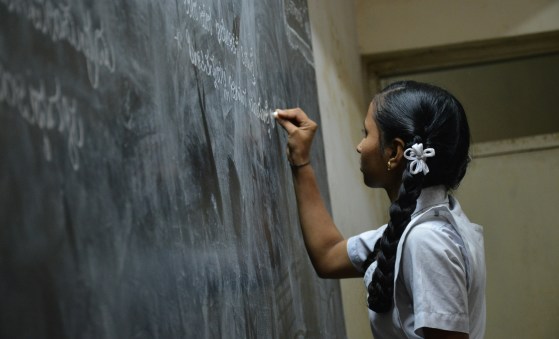Velankanni – For nearly a fortnight, the famous Basilica of Our Lady of Good Health is wearing a deserted and a haunted look with a pall of gloom descending on its pilgrims. The church grounds and surrounding premises have become a virtual graveyard as hundreds of pilgrims, villagers and fishermen died when the killer tidal waves hit the coastal area on Sunday, December 26, 2004.
Father P. Xavier, who used to take care of thousands of pilgrims who flocked to India's most famous Marian shrine during the Christmas season, is now busy recovering dead bodies from under the debris of inns and shops that once circled the shrine at Velankanni.
Most of these buildings collapsed on Sunday after a tsunami, a series of tidal waves generated by an undersea seismic disturbance, struck southern coastal areas of India and other nations like Indonesia, Thailand, Malaysia and Sri Lanka.
In India, alone, the tsunami has left about 14,000 dead with Tamil Nadu recording casualties of over 6,500. In Sri Lanka, over 30,000 people have died and in Indonesia, the figure has topped 1,10,000.
"Our shrine has become a graveyard," lamented Fr. Xavier, the shrine rector, as he led groups of volunteers in recovering the bodies and clearing the debris. "We continue to get bodies from everywhere. I have never seen so many dead bodies together," said the priest, visibly tired. His team comprises parish volunteers and priests from Thanjavur diocese, to which the shrine belongs.
Huge waves struck the shrine when Fr. Xavier was overseeing Mass celebrations on Sunday morning. An estimated 20 million pilgrims from all over India visit the shrine annually, many in search of healing for various physical ailments.
Fr. Xavier shuddered as he recalled the "black Sunday morning" the day after Christmas, which began as a time of celebration for thousands who had poured into the shrine. Spending Christmas at Vailankanni is a custom among many Christians in Tamil Nadu and neighboring states.
"We do not know the number of pilgrims who have died in this disaster. But we have collected over 800 bodies so far," Fr. Xavier said.
The waves have destroyed the compound wall but spared the shrine, which is on higher ground. Most victims were on the adjacent beach after the first Sunday morning Mass, which was celebrated in the Tamil language.
The waves struck about 9:20 a.m., as a Mass in Malayalam for people from neighboring Kerala state on the western coast was in progress inside the shrine. Those on the seashore scurried for cover, but the massive waves dragged most of them away. The waves receded almost at the same frightening speed they came, but sucked hundreds of people into the black, churning sea.
The water also gushed into the main road and arterial lanes that lead to the shrine, inundating shops and houses.
As Fr. Xavier rushed out, he saw water everywhere. "We could do nothing to save the pilgrims on the beach. We can only now pray for them," he said emotionally. The enormity of the tragedy shook the priest as he ran around the church: "I saw bodies everywhere on the beach."
The priest said that after he overcame his initial shock and fear, he asked parish lay leaders to launch a rescue mission. The assault by the sea had snapped telephone and electricity lines, so the parish sent someone to the diocesan headquarters 90 kilometers to the west to seek aid.
Fr. Xavier later praised the efforts of several hundred volunteers who rushed to the shrine on December 26 as government officials left the entire relief and rescue work around the basilica to the church.
In their search for bodies, volunteers dug into the mounds of debris that once were houses and shops around the shrine. Diocesan authorities also brought in earthmovers to extricate the bodies.
"We cannot even keep these rotting bodies for identification," he said. Volunteers photographed each of the bodies, then buried them in common graves. The photos were pasted on a notice board for relatives to identify victims.
The stench of rotting bodies was so strong that even on the basilica grounds dozens of priests wore surgical masks in their rooms while coordinating relief work and responding to anxious relatives of pilgrims missing in the tragedy. Basilica staffers, like others, functioned without electricity or running water.
The search and rescue operations carried on till December 29. Till then, over 800 bodies were recovered.




